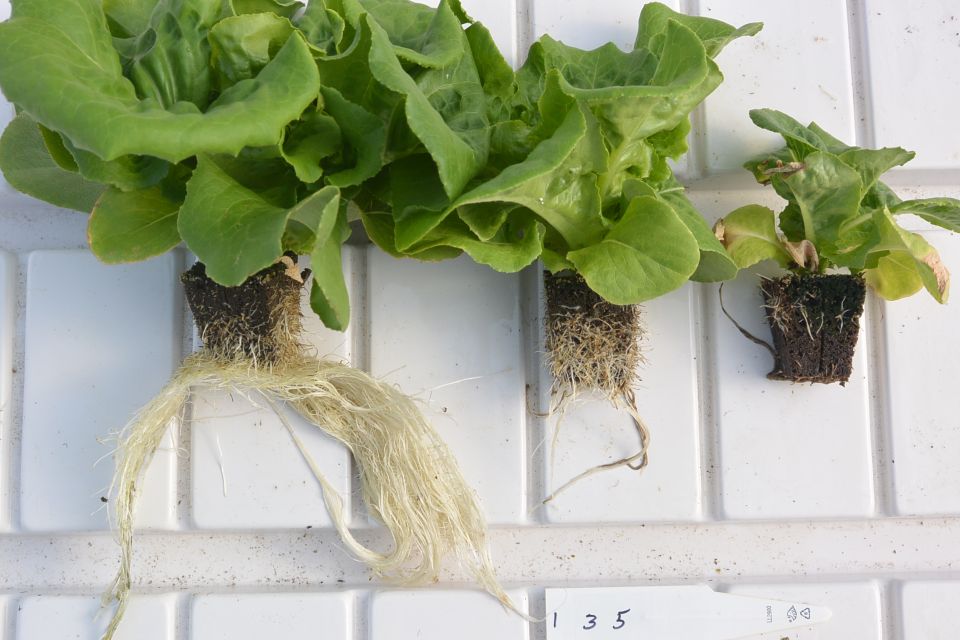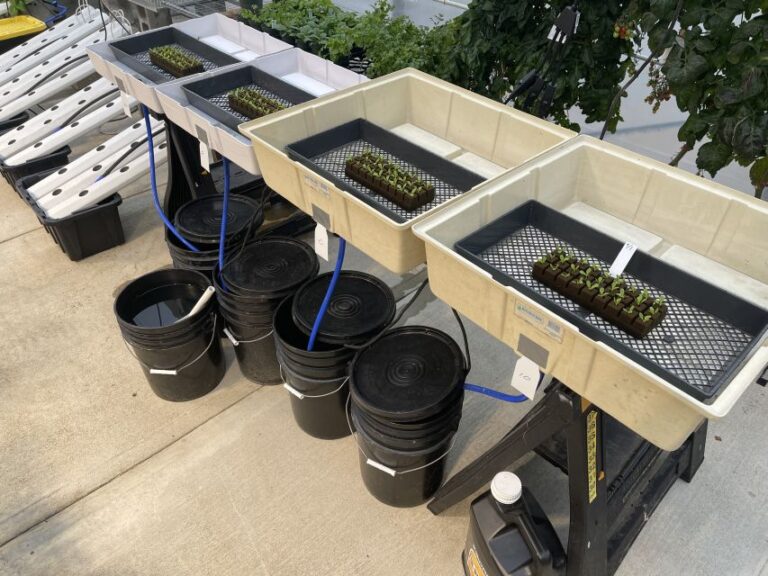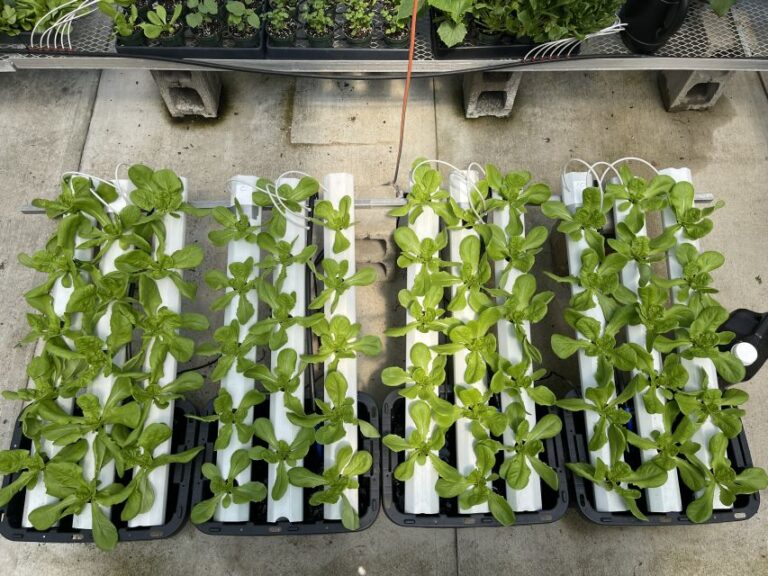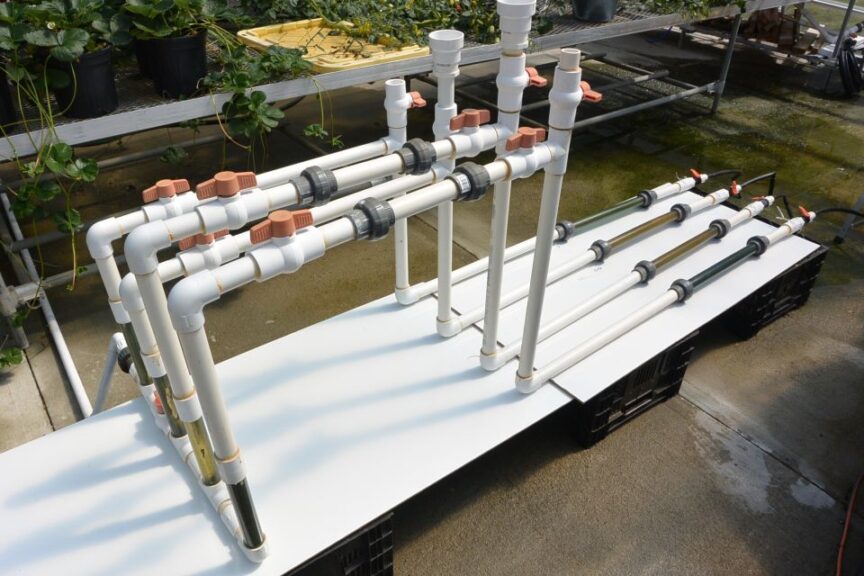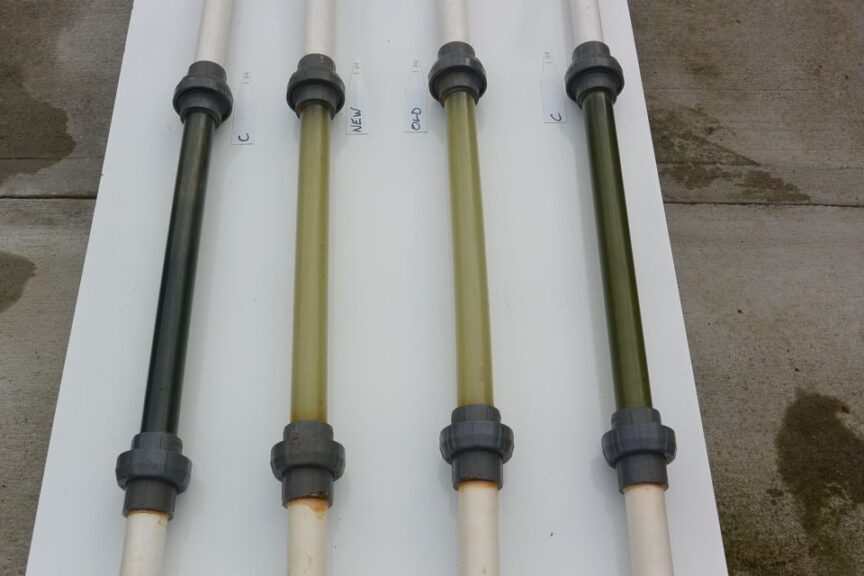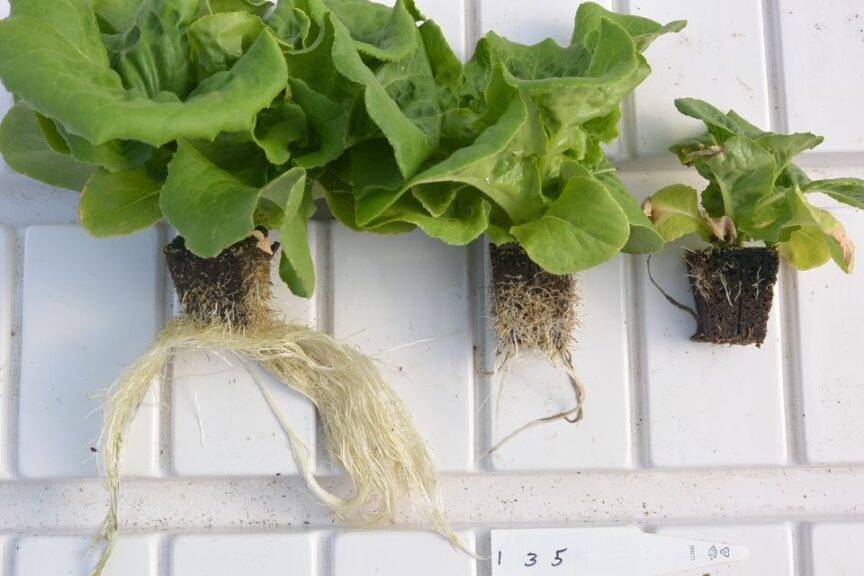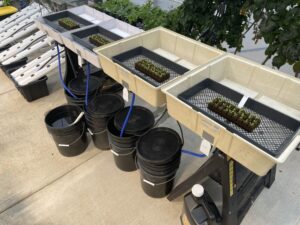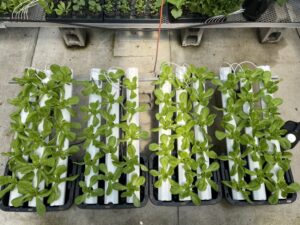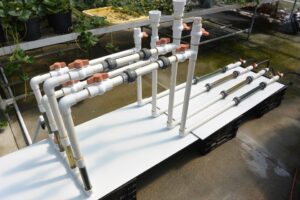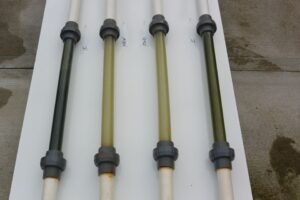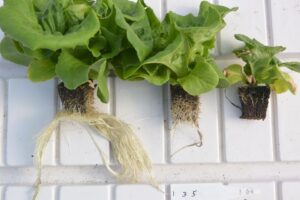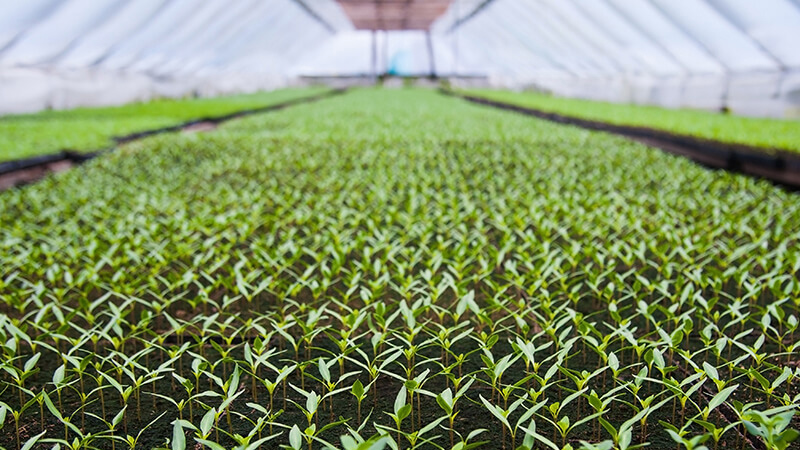Water Sanitation and Biostimulants: Conflict Approaches, Reconciliation Awaits
Those who have lived in or worked for family-run agriculture operations know that lines can be blurred between professional and personal lives. Working with my parents was the privilege of a lifetime. I loved my early career as a university professor, but I loved even more choosing with my wife to raise our son and daughter in a greenhouse environment with both sets of grandparents in their everyday lives. The first ten years of my childhood were spent in a three-generation household with my mother’s parents which, likely, set a deep taproot for my connection to the family farm.
As my parents’ health failed, I’d step into their kitchen each day to say a quick good morning and to state, “There’s never been a better time to be sick”. That may sound negative, but it was my way of offering the encouragement that we are living in an amazing age of health care that’s advancing by the minute. My job was taking them to their doctors’ appointments, and my brother’s was managing the finances for them and the family business. I learned a lot about the heart and brain as their health declined and believe medical technology is on the threshold of a golden age.
East Meets West, Chemical Meets Biological
I also believe we are witnessing a merging of Western and Eastern medicine philosophies. The phrase “blurred lines” from above is appropriate here as well. Traditional Western and traditional Eastern medicine are blending in ways that leverage the best of both. Indeed, we are learning with each passing day.
What does this have to do with water treatment and biostimulants? Much like Western and Eastern medicine blending together, hybridizing if you will, I believe we’re also witnessing a hybridizing of traditional chemical crop inputs with natural, biological inputs.
Often the merging of these two approaches requires us to simply do the research to figure out how one input effects the other. A good example is how we’re learning that some natural bacteria and fungi can be incorporated into a traditional fertilizer program to improve nutrient use efficiency, thereby reducing chemical fertilizer input.
Skyrocketing Input Costs
Talk about a perfect storm, this past spring I paid $90 for a 25-pound bag of 5-12-26 hydroponic fertilizer. My jaw is still on the ground. Even though we’re through the critical stage of the pandemic, supply chain disruption continues to affect our lives from local to global levels. A word of caution: it’s going to get worse before it gets better. Fertilizer and most crop input prices are rising at concerning rates.
Research clients requesting my private sector research include biostimulant companies. When asked to investigate “Can fertilizer input be reduced by incorporating their biostimulant,” my response is “Let’s find out”. Or, if another asks “Will incorporating our biostimulant provide stress protection during shipping and retail shelf life,” my response is “Let’s figure it out”. Still, what’s all this have to do with water treatment and biostimulants? Simple observations set the stage for a complicated reality.
Researchers Live to Pivot
As a private sector researcher, I face many of the same challenges as my academic colleagues. One challenge is learning how to pivot to new areas of interest once a research project concludes.
In the early 2000s, my focus pivoted from Florel and ethylene to irrigation system sanitation and water treatment to address algae and biofilm management. Early years focused on chlorine dioxide, and the past seven have focused on the quaternary ammonium compound DDAC (Pace 49 Chemicals, trade names KleenGrow, UpTake Pro).
Between the chlorine dioxide and DDAC work, I also pivoted away from ornamental crops to edible crops. For me this shift closes my circle from early years on the family truck farm to adult years in the family greenhouse-garden center and now to contribute to agriculture’s challenge of feeding the world sustainably.
My colleagues will no doubt agree that while a familiar research focus is comfortable, choosing new areas to focus on stand to broaden one’s perspective. Like a grower learning to grow a new crop, opportunities to pivot to new research ideas are rewarding. A broader understanding of a complex issue is welcome and helpful. And here lies the conflict and reconciliation of this article.
Conflict #1: One Direction Is Easy, Recirculation Is Harder
Okay, so it’s pretty easy to test a product to determine if its use allows for lower chemical fertilizer input. I currently have two projects with different clients investigating this hypothesis. One project is focused on a biostimulant product that is effective in field agriculture; the company’s logical next step is to investigate the product’s potential effect in controlled environment agriculture (CEA) systems.
Figure 1 in the slideshow above shows the germination stage of the project using lettuce germinated with four flood and drain solution treatments; an untreated control and three product concentrations. Figure 2 shows young lettuce plants from the four germination treatments transferred to nutrient film channels with the same treatment solutions. Experiments such as this one are easy to design and execute.
More challenging, however, is the water treatment project. The objective of irrigation system sanitation and water treatment is to kill microorganisms. Specifically, the objective is to kill algae, kill and/or manage plant pathogens such as Pythium, and control biofilm whose common description is a self-supporting community of naturally occurring, highly evolved bacteria. What do these three targets have in common? They’re all microbes if we loosely accept that the types of algae involved in irrigation systems are microbial to a degree and different than higher forms such as giant kelp.
Figure 3 shows an experimental irrigation setup designed to test various irrigation line treatments to control algae and biofilm. Clear sections of PVC pipe allow for visual, nondestructive monitoring both up and down stream from treatment. Fertilizer is injected normally into the source water feeding into the setup on the left. Short, clear vertical PVC sections allow visual monitoring upstream of treatment, valves and treatment injection sites are shown in the middle, and post-treatment clear horizontal PVC sections are seen at the lower right with valves to simulate irrigation events. Hence the clear PVC sections provide “before” and “after” treatment visuals.
Figure 4 shows results from an experiment using two sanitizing agents (inner two PVC sections) and two untreated controls (outer two sections) after one overnight charge of the system. Lighter-green color shows efficacy against a significant portion of the algae load.
These two experiments, one biostimulant and one sanitizing agent, illustrate the relative ease of designing research to examine one or the other. Reality, however, suggests that learning how each product should be used by itself is the easy part. More difficult is learning how to blend the two products into the same production system, blurring the lines once again.
Intensifying the conflict is the expanding use of recirculating irrigation systems. Pushed to even greater limits is hydroponic production, where the root zone is mostly void of physical growing media components. See where this is going? To date, my research and that of others has focused on developing protocols for various products and product categories (oxidizers, membrane disruptors, etc.) to treat irrigation systems and the water delivered to crops. Our focus is to essentially kill everything and deliver sanitized water to the crop production area be it a field, greenhouse, or vertical farm.
Traditional, one-directional irrigation systems are the easiest to deal with. Treat the lines and water flowing through them at concentrations safe to apply to the growing medium surface. But once we decide to recirculate and use the water repeatedly…oh-oh, watch out. Again, less of a problem with crops grown in traditional growing mixes compared to hydroponics.
Grasping this challenge can be made easier by thinking of the organic components of traditional mixes: the peat, bark, coco coir, and such as buffering agents. Serving in this role, they neutralize oxidizing compounds and otherwise tie up other categories of sanitizing chemistries. The result is a convenient way to treat irrigation lines, deliver treated, sanitized water to the crop, and avoid causing phytotoxicity to the root system because the growing medium neutralizes the chemical by acting as a buffer, a protector. Of course, any of the products used this way can be overdosed and cause phytotoxicity.
As stated above, once we capture and recirculate the solution, watch out. We need to understand what level of residual activity of the sanitizer is returning to the reservoir before we can add make up solution with more sanitizer and send the reservoir contents back out for another irrigation cycle.
But again, it’s the recirculating hydroponic systems that have attracted most of my attention in recent years. On one hand the concept of recirculation and its 80% to 90% reduction in water
consumption is, without doubt, our future. However, we also need to acknowledge that we’re creating a worst-of-both-worlds scenario. First, the recirculation challenge of residual chemistry needs to be mastered. Second, the naked root system’s sensitivity to the chemical due to the absence of physical buffers needs to be managed (Figure 1).
This is absolutely solvable, it’s not a doom and gloom discussion. But before the problem can be solved it needs to be identified, acknowledged, and understood.
Conflict #2: To Kill or Not to Kill
To what degree of efficacy we try to sanitize an irrigation system and the water flowing through it may depend on which of the two irrigation strategies is in use. One directional, drain to waste … easy peasy as explained above.
The tougher nut to crack is treating recirculating hydroponic systems for reasons cited. There are two levels of concern for these systems. First, before even considering biostimulant inputs, a compromise must be found between how much chemical exposure is supplied to kill the undesirable microbes versus how much exposure the naked root system can tolerate before experiencing phytotoxicity. This research is currently underway. An article summarizing my progress will appear in an upcoming issue of Greenhouse Grower.
Second, once we learn enough about the benefits of using biostimulant products in recirculating hydroponic systems, the next conflict takes center stage. To kill or not to kill … how did that Shakespearian line go? Are we going to be faced with tolerating algae, plant pathogens, and biofilm in order to leverage the benefit of the biostimulant? Or are we going to kill the biostimulant because we need to control the algae, plant pathogens, and biofilm.
Will we be lucky and find a sweet spot like we did with steam pasteurization of soil-based growing mixes? How fortunate we were to learn that a steam treatment of 180°F for 30 minutes killed plant pathogens and weed seeds while not destroying beneficial nitrifying bacteria. This best of both worlds, not worst, benefited several generations of growers, mine included.
Will we be as fortunate to learn that various sanitizing agents used at lower than currently recommended concentrations will not be phytotoxic to hydroponically grown crops yet effective in killing unwanted microbes? This is being researched as these words are being typed. But tossing the monkey wrench that is biostimulants into these systems, well, as stated above, don’t we first have to agree that a conflict may exist? Something we need to pivot toward? Is this another example of “East meets West” where a merger of approaches is in order? Today’s message is that the solution is not likely to be ‘to kill or not to kill’ but, rather, ‘how much to kill and how much not to’.
Reconciliation
With the conflict identified what options are available? One may be to use the sanitizing agent less than continuously, periodically pulsed, in order to use the biostimulant during the gap periods. Recent experiments have produced encouraging results using this tactic for the sanitizing side of the conflict. Will these concentrations allow biostimulants to perform or inhibit their activity? Can such a blended system yield higher profitability than the use of either product alone? It’s exciting to be focusing on these questions.
To conclude, today’s take home message is that we need to start talking about how we can reconcile the chemical-biological conflict knocking on the door. Blurring the lines between the two philosophies and navigating an east meets west challenge awaits. And just like my comment that there’s never been a better time to be sick I can also say there’s never been a better time to be researching plant production systems.




